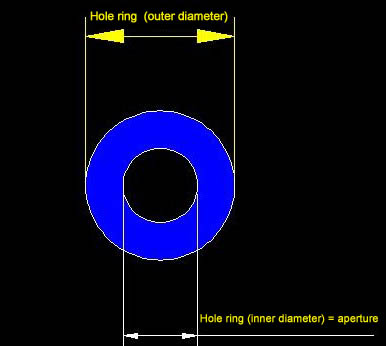About us
FASTPCBA Co.,Ltd
-
 Building 1, Senyang Electronic Technology Park, Guangming High-tech Park, Yutang Street, Guangming District, Shenzhen City.
Building 1, Senyang Electronic Technology Park, Guangming High-tech Park, Yutang Street, Guangming District, Shenzhen City.
-
 F:86-13418481618
F:86-13418481618
-
 pcba13@fastpcba.cn
pcba13@fastpcba.cn
 date:2021-05-04 14:15:51
date:2021-05-04 14:15:51
In PCB board design, holes have four functions: electrical conduction, positioning, heat dissipation, and convenient board separation. The holes are divided into Plated Through Holes (PTH) and Non-Plated Through Holes (NPTH). In a general design, only the PTH hole has an annular ring (see the figure below), and the NPTH hole does not have an annular ring, but In some special cases, the NPTH hole will also be designed with a ring (the ring at this time plays a grounding role).

What are the uses of PTH and NPTH
PTH is a metalized hole. Generally, there are two uses for PTH holes in circuit boards. One is for welding the legs of traditional DIP parts. The diameter of these holes must be larger than the diameter of the welding legs of the parts, so that the parts can be removed. Insert it into the hole.
Another kind of relatively small PTH, usually called via, is used to connect and conduct the copper foil circuit between two or more layers of the circuit board (PCB), because the PCB is composed of many copper foil layers It is accumulated by stacking, and an insulating layer is laid between each layer of copper foil, which means that the copper foil layers cannot communicate with each other. The signal connection is via via, so it is called "Plated Through Holes".
NPTH is a non-metallized hole. There is no copper inside the hole. Electrical isolation through holes refer to the top and bottom layers of the PCB. Similar holes have blind and buried holes. The through holes can be PTH or NPTH, according to specific needs Depends. For example, the holes used to connect the wires need PTH, and the holes used for fixing functions, such as screw holes, may be NPTH.

 Building 1, Senyang Electronic Technology Park, Guangming High-tech Park, Yutang Street, Guangming District, Shenzhen City.
Building 1, Senyang Electronic Technology Park, Guangming High-tech Park, Yutang Street, Guangming District, Shenzhen City.
 F:86-13418481618
F:86-13418481618
 pcba13@fastpcba.cn
pcba13@fastpcba.cn